

| The ladyslipper flower is specifically optimized to facilitate cross pollination of the orchid plants, ensuring genetic diversity. Take an insect-eye's tour of the ladyslipper flower. |
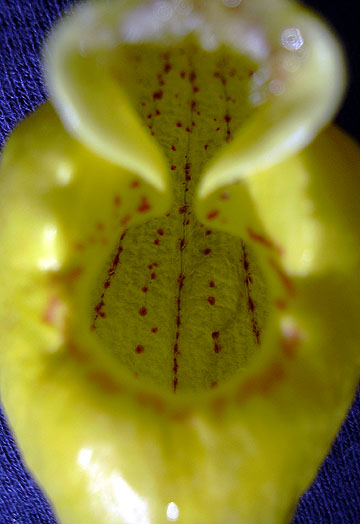 Landing pad and interior markings of Cypripedium pubescens. |
The top, outer area of most Cypripedium flowers, including Cypripedium pubescens, provide an easy landing area for inquisitive insects. With just a bit of exploring, the insect will find itself trapped on the inside of the blossom where the incurved margins of the opening prevent escape through the main pouch opening. Every element of design directs the insect to the tiny back exit of the flower. |
| Inside the pouch, an insect will be lured toward the rear exit by rows of guide dots or lines, a hairy "ladder," and translucent exit windows. The insect must squeeze between the "foot" or stigmatic surface of the ladyslipper and subsequently past the sticky pollen masses. If the insect has a pollen mass on its back, the pollen will be scraped off onto the stigma. The insect should pick up a new pollen mass as it pushes out the exit. | 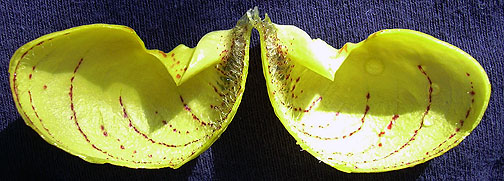 Pouch markings, hairs, and windows in Cypripedium pubescens 'Vigrous'. |
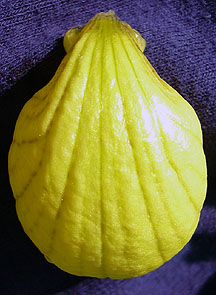 Bottom of the pouch of Cypripedium pubescens 'Vigrous'. |
The pouches of all ladyslipper species are a constant compromise of size and shape. Too big and the insect will escape, too small and the insect will not be trapped. Each species of Cypripedium, Paphiopedilum, Phragmipedium, Selenipedium, and Mexipedium has its own pollinator or set of pollinators who must be satisfied in order for the ladyslipper species to survive. |
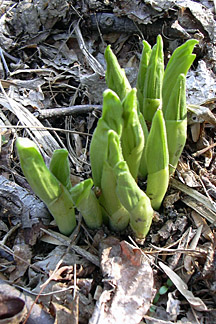 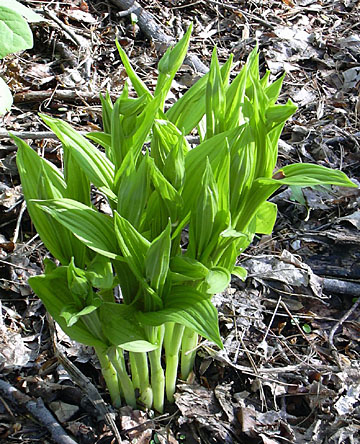 Cypripedium pubescens 'Vigrous' clump in early April in Baltimore, Maryland, USA. These photos were taken one week apart. |
| Cypripediums can be very fast growing. The pictures above illustrate how quickly they can expand in the Springtime, going from dormant to blooming in less than a month. Cypripediums are also very fast (for ladyslippers) growing from seed to flower. I have had several hybrids bloom three years out of flask. I'm certain that some of the better growers should be able report two-year flask-to-flower records. Do you have some stories or tips? Please share them: DrRiley@aol.com. |
Permission is granted to reproduce these pages for educational use in newsletters and programs. |